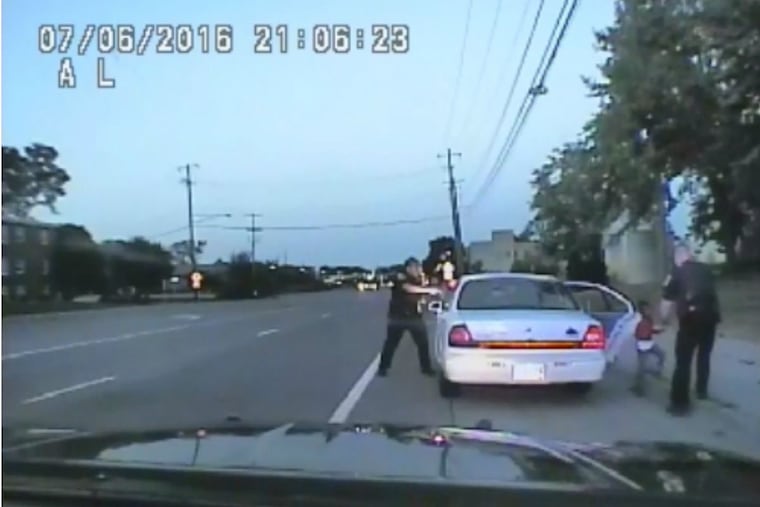7 seconds. That's how long it took to kill a compliant black man carrying a legal gun
It's hard to do anything in 7 seconds, yet that's how long it took a Minnesota police officer to kill a legally armed and complying black motorist. And it's increasingly clear that America lacks the will or the ability to solve the scourge of police-involved killings.

I was going to write something else tonight, but suddenly the idiocy of a Democratic senator from West Virginia doesn't seem particularly important. Late this afternoon, I took a minute or so to watch the police dash-cam video of last July's police-involved killing of Philando Castile, the African-American man who was shot seven times during a traffic stop in Falcon Heights, Minn., last summer. Let's say it was a minute and seven seconds, because I had to watch the key footage — the seven seconds when a very routine police traffic stop turned into the violent death of a legally armed black driver — a second time. Because I couldn't believe what I was watching the first time I saw it. And because the video of this tragedy — taking place in front of his fiancee's 4-year-old daughter, no less — is so nauseating.
The video was released just a few days after the officer who fired the lethal shots — Jeronimo Yanez — was found not guilty of murdering Castile and endangering his fiancee, who filmed the aftermath and posted that harrowing footage on Facebook Live, and her daughter. From a purely public relations standpoint, it's understandable why the authorities tried to keep this under wraps as long as possible, It also explains why police unions and their legion of political allies are fighting so hard to limit the public's ability to see these kind of videos. Because the proper exercise of the public's right to know what its government is doing happens to also undermine the moral authority of that same government.
But now — in the (barely) better-late-than-never department — you can watch the sickening video yourself. Every citizen should.
It's no secret that a civil society gives enormous leeway to our law-enforcement officers to make difficult snap judgments on when to use lethal force. That leeway has saved innocent lives, and obviously the jury at Yanez' trial gave enormous weight to that tradition. Still, is that leeway earned when Castile — a popular school cafeteria worker with no felony criminal record — is clearly heard on the video volunteering the information that he is carrying his legally permitted handgun? Or when Castile tells the officer, in response to his command to not take the weapon out, that he is in fact not taking it out? None of his seemingly proper actions stopped a decision to kill with seven shots, the decision that took only seven seconds.
And there's more going on here than can be captured in the video. The video doesn't show that Castile — who was returning from the grocery store — was stopped because cops were looking for a criminal suspect with "a wide-set nose," a feature shared by many African-Americans, or that Castile, a regular guy with a regular job, had been stopped for minor traffic violations a remarkable 52 times. It doesn't show that the officer, Yanez, had recently watched a police "training video" called "The Bulletproof Warrior" that critics — with a lot of justification — say amps up levels of paranoia among the cops who watch it.
How else to explain making such an awful, deadly decision in just seven lousy seconds? Something else I learned tonight is that there's a "thing" on the internet called "the 7-second challenge." Because 7 seconds is such a short, thrilling time period to complete a complex task. Name five breeds of dogs! Touch all the walls in your house! Take off your socks and put them back on, inside out! Write your name backwards!
Somehow, shooting a compliant motorist who happens to be black didn't make the list.
Now, here comes the sternly worded part of the post where I tell society how to solve this terrible problem. But you know what? I'm out of ideas. You can write 100 new laws, but it doesn't matter when American juries have made it clear that virtually no action by a police officer in these scenarios will be considered a crime. The rise of dash-cam and now body-cam videos has helped to inform the public — and yet police shot and killed just as many suspects in 2016 as they have in prior years. Even asking police to impose more discipline on officers who behave badly means pretending that police unions don't have a ridiculous amount of power in this country. Somehow, some way, and it may take years — probably more years than I left on this good earth — we need to change what goes through the mind of the American police officer in those seven seconds. Our national soul depends on it. But I have no clue how we get there.